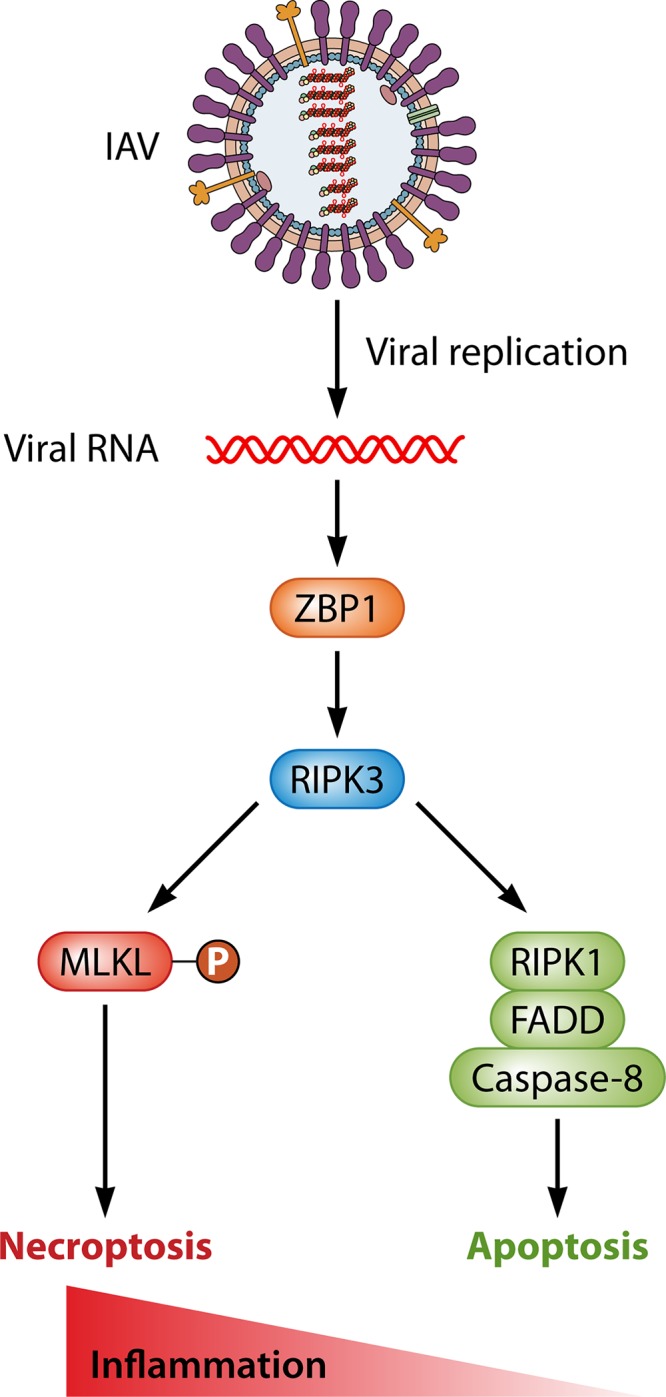FIG 1.

IAV-triggered cell death pathways. The host protein ZBP1 senses genomic and subgenomic RNAs produced by replicating IAV, following which it activates RIPK3. Once activated, RIPK3 can induce two modes of cell death, necroptosis (left) and apoptosis (right). Necroptosis is mediated by MLKL and requires the kinase function of RIPK3, whereas apoptosis is driven by a RIPK1-FADD-caspase-8 axis, and does not require RIPK3 activity. These pathways are active in renewable lung cell types, such as type I airway epithelial cells and fibroblasts, but whether they operate analogously in irreplaceable cell types (such as neurons) is currently unknown. As necroptosis is more inflammatory than is apoptosis, the degree to which RIPK3 activates necroptosis may dictate if ZBP1-activated cell death produces beneficial or pathological outcomes during IAV infections.
